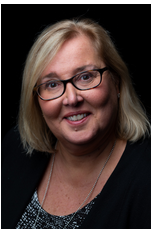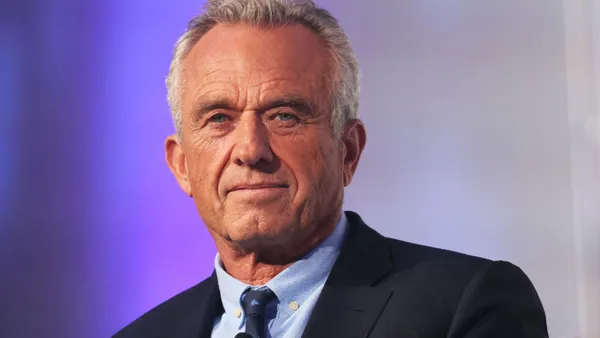What’s old is new again
 This month’s cover story addresses an interesting take on science, or rather repurposing scientific R&D in a different way. For a whole host of reasons — patent cliffs, increasing discovery and development costs, mergers and acquisitions — companies are becoming more strategic about repurposing existing and shelved products to build their pipelines and get as much value as possible out of their time and money investments in R&D.
This month’s cover story addresses an interesting take on science, or rather repurposing scientific R&D in a different way. For a whole host of reasons — patent cliffs, increasing discovery and development costs, mergers and acquisitions — companies are becoming more strategic about repurposing existing and shelved products to build their pipelines and get as much value as possible out of their time and money investments in R&D.
According to infectious disease specialist Dr. Judy Stone in a report for Forbes, there are about 2,000 shelved drugs in the industry, including 1,500 FDA-approved drugs that were put aside because they were deemed not profitable enough. These drugs represent a ripe opportunity for companies that are eager to pursue their possibility for other indications. Developing a drug from this approach is much less costly and more time efficient. Dr. Stone says through repurposing a company could potentially develop a drug in 18 months to 36 months and for less than $250,000.
And this strategy is not just being pursued by big pharma companies such as Astellas, Novartis, AbbVie, and Pfizer, but patient organizations, consultants, and academia are all taking steps forward to use this strategy, sometimes called rediscovery research, to find treatments from existing drugs to fill other unmet medical needs.
One of those unmet needs is in the rare disease space. Rare disease organizations have a vested interest in repurposing due to the large unmet need in the field; currently, more than 70% of rare disease patients receive off-label therapies. As such, researching the thousands of shelved or failed drugs looking for a new indication in rare disease is gaining traction in this space.
As International Rare Disease Day — Feb. 29 — approaches, it’s important to remember that there are between 300 million and 400 million patients suffering from 6,000 to 7,000 different rare diseases. Yet, millions of people with rare diseases struggle to access diagnosis, treatment, and care — indeed, 95% of rare diseases do not have a single FDA approved drug treatment. In the United States alone that means more than 30 million people living with rare diseases have few to no options.
As noted in this month’s Rare Disease Showcase, there is positive news. According to a 2019 study published by Tufts University, rare disease drug development is one of the fastest-growing areas in R&D, accounting for as much as one-third of products in the R&D pipeline. And in 2018, BIO reported that there were 595 companies developing orphan therapies, and almost every pharmaceutical company has, or is opening, a rare disease division.
We will be tracking #rarediseaseday, hopefully you will be too. We would be happy to share your rare story with our audience.
Taren Grom, Editor
~~~~~~~~~~~~~~~~~~~~~~~~~
 Their word…
Their word…
Denise Myshko
Managing Editor
Strides have been made in improving cancer outcomes with the cancer death rate down 25% since its peak in 1991, making nearly one in 20 Americans a cancer survivor.
Robin Robinson
Senior Editor
Some of the most well-known drug repurposing cases happened by accident, but today, the industry is increasingly taking a more strategic approach.
Kim Ribbink
Features Editor
Rare disease R&D is growing faster than any other area, bringing hope to many of the millions of patients suffering with one of around 7,000 diseases.
~~~~~~~~~~~~~~~~~~~~~~~~~
March 2020 Patient VOICE
Corporate Culture
Drug Discovery
Clinical Development
Marketing and Education
Crucial Relationships
Patient Heroes
Showcase: Real-World Evidence
~~~~~~~~~~~~~~~~~~~~~~~~~
Masthead
The forum for the industry executive
Volume 20 • Number 2
Publisher Lisa Banket
Editor Taren Grom
Creative Director Marah Walsh
Managing Editor
Denise Myshko
Senior Editor
Robin Robinson
Features Editor
Kim Ribbink
Design Associate
Ariel Medel
Director of Sales
Cathy Tracy
National Account Manager
Suzanne Besse
Webcast Network Producer
Daniel Limbach
Circulation Assistant
Kathy Deiuliis
Copyright 2020
by PharmaLinx LLC, Titusville, NJ
Printed in the U.S.A.
Volume Twenty, Number Two
PharmaVoice (ISSN: 1932961X) is published monthly except joint issues in July/Aug. and Nov./Dec., by PharmaLinx LLC, P.O. Box 327, Titusville, NJ 08560. Periodicals postage paid at Titusville, NJ 08560 and additional mailing offices.
Postmaster: Send address changes to PharmaVOICE, P.O. Box 292345, Kettering, OH 45429-0345.
PharmaVOICE Coverage and Distribution:
Domestic subscriptions are available at $190 for one year (10 issues). Foreign subscriptions: 10 issues US$360. Contact PharmaVOICE at P.O. Box 327, Titusville, NJ 08560. Call us at 609.730.0196 or FAX your order to 609.730.0197.
Contributions: PharmaVoice is not responsible for unsolicited contributions of any type. Unless otherwise agreed in writing, PharmaVOICE retains all rights on material published in PharmaVOICE for a period of six months after publication and reprint rights after that period expires. E-mail: tgrom@pharmavoice.com.
Change of address: Please allow six weeks for a change of address. Send your new address along with your subscription label to PharmaVOICE, P.O. Box 292345, Kettering, OH 45429-0345. Call us at 800.607.4410 or FAX your change to 937.890.0221. E-mail: mwalsh@pharmavoice.com.
Important notice: The post office will not forward copies of this magazine. PharmaVOICE is not responsible for replacing undelivered copies due to lack of or late notification of address change.
Advertising in PharmaVoice: To advertise in PharmaVoice please contact our Advertising Department at P.O. Box 327, Titusville, NJ 08560, or telephone us at 609.730.0196. E-mail: lbanket@pharmavoice.com.
Letters …
Send your letters to feedback@pharmavoice.com. Please include your name, title, company, and business phone number. Letters chosen for publication may be edited for length and clarity. All submissions become the property of PharmaLinx LLC.










